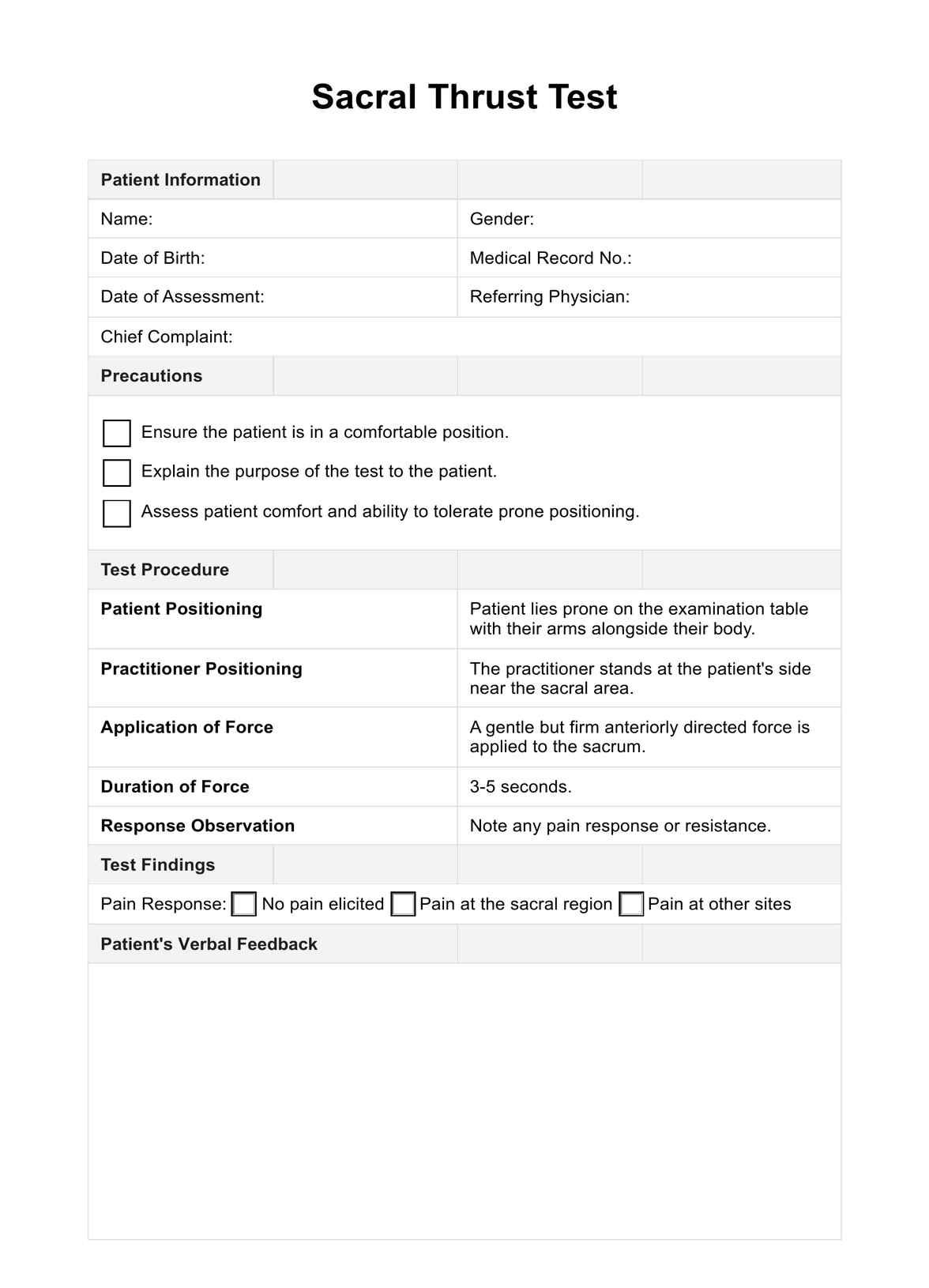The patient lies in a prone position on an examination table during the Sacral Thrust Test. At the same time, the practitioner applies anteriorly directed pressure to the sacrum, typically over the spinous process of the second sacral segment.

Sacral Thrust Test
Learn about the Sacral Thrust Test, a diagnostic procedure for evaluating sacroiliac joint dysfunction and related lower back pain.
Use Template
Sacral Thrust Test Template
Commonly asked questions
The primary purpose of the Sacral Thrust Test is to test and provoke pain or discomfort in the sacroiliac joint region, helping clinicians identify potential dysfunction or pathology.
The Sacral Thrust Test may be indicated in patients presenting with chronic low back pain, particularly when sacroiliac joint dysfunction is suspected based on clinical history and physical examination findings.
EHR and practice management software
Get started for free
*No credit card required
Free
$0/usd
Unlimited clients
Telehealth
1GB of storage
Client portal text
Automated billing and online payments











